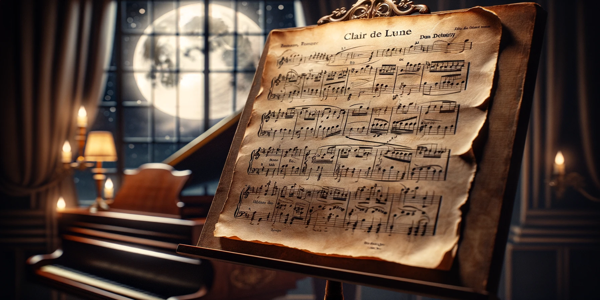Few piano compositions are as iconic and instantly recognizable as Beethoven’s “Für Elise.” This timeless masterpiece has captured the hearts of pianists and listeners for generations, cementing its place as one of the most beloved pieces in classical music history. Whether you’re a budding piano student, a classical music lover, or a seasoned pianist, understanding “Für Elise” sheet music is the first step toward appreciating and mastering this enchanting melody.
This guide will take you on a deep dive into the history, significance, and tips for learning and interpreting “Für Elise.” We’ll cover everything from sheet music basics and learning strategies to its cultural influence and historical context.
Introduction to “Für Elise”
“Für Elise” is one of Ludwig van Beethoven’s most famous piano compositions. Composed in 1810, this short but captivating piece was officially titled “Bagatelle No. 25 in A minor.” Surprisingly, “Für Elise” wasn’t published until 40 years after Beethoven’s death, when it was rediscovered by musicologists.
Beethoven’s inspiration for the piece remains a topic of debate. While it translates to “For Elise,” the identity of Elise is shrouded in mystery. Some speculate it was dedicated to a woman named Elise, while others believe it was a mistranslation of “Therese,” one of Beethoven’s romantic interests. Regardless of its origin, Beethoven’s emotional genius shines through every note.
Why “Für Elise” Matters in Music
“Für Elise” holds a special place in the world of classical music. Its timeless elegance makes it a popular choice for pianists of all skill levels.
- A Universal Favorite
Despite its technical simplicity for beginners, “Für Elise” offers rich layers of emotion and expression that challenge even advanced players. Its memorable motifs and flowing dynamics make it an excellent gateway into Beethoven’s music.
- A Symbol of Classical Music’s Legacy
The piece has become synonymous with classical music as a whole, often serving as an entry point for many into Beethoven’s vast repertoire. Even casual listeners recognize its opening theme, highlighting its widespread cultural impact.
Understanding “Für Elise” Sheet Music
For anyone learning “Für Elise,” starting with the sheet music is key. It’s essential to familiarize yourself with sheet music basics, as well as the specific characteristics of “Für Elise.”
- Key Features of the Sheet Music
“Für Elise” is written in the key of A minor, giving it a melancholic yet graceful feel. The time signature is 3/8, creating a gentle, flowing rhythm. Its recurring motifs comprise intricate arpeggios and lyrical melodies that remain intact in simplified and full original sheet music versions.
- Why Learn to Read the Original Sheet Music?
Understanding the sheet music helps you interpret dynamics, phrasing, and articulation exactly as Beethoven intended. Pay close attention to crescendo and diminuendo markings, as these give life to the piece’s emotional nuances.
Exploring Arrangements of “Für Elise”
Depending on your skill level, you may want to explore various arrangements of “Für Elise.”
- Beginner Versions
For those just starting out, simplified versions of the piece reduce the complexity of Beethoven’s original composition into manageable portions, typically by focusing on the right hand’s iconic melody. These versions are great for improving finger placement and rhythm.
- Intermediate and Advanced Versions
If you’re an intermediate player, you can tackle slightly more detailed arrangements with layered left-hand sections. Advanced pianists will want to study and master the full original version, which includes fast arpeggios and intricate handwork.
Anatomy of “Für Elise” Sheet Music
Taking a closer look at “Für Elise” sheet music can deepen your understanding and appreciation for this masterpiece.
- Key Signature: Written in A minor, the piece’s tonal quality alternates between wistful, serene, and playful moods.
- Time Signature: The 3/8 time signature adds a flowing, waltz-like quality that defines the piece.
- Motifs and Themes: The opening theme—light, cascading arpeggios—is the piece’s hallmark, while the contrasting middle sections feature lively, dramatic shifts.
Tips for Learning “Für Elise”
Learning “Für Elise” is a rewarding experience, but it comes with its challenges. Here’s how to approach it based on your skill level:
For Beginners:
- Break the piece into smaller sections, focusing on one motif at a time.
- Use simplified sheet music to build confidence before transitioning to the more complex original.
For Intermediate Learners:
- Practice the left hand and right hand separately before trying hands together.
- Pay attention to dynamics to infuse emotion into your performance.
For Advanced Pianists:
- Work on perfecting tempo consistency, particularly in the arpeggios.
- Experiment with the pedal to enhance expressiveness while avoiding overly muddy tones.
Digital vs. Printed Sheet Music
When it comes to accessing sheet music, you’ll likely consider two main formats:
- Digital Sheet Music: Ideal for quick downloads and on-the-go practice. Many websites offer free or paid versions, often with interactive tools like playback and transposition. The downside? You’ll need a device handy to view it.
- Printed Editions: Preferred by traditionalists, physical copies are easier for marking notes and annotations. Plus, there’s no fear of technical issues mid-performance!
Where to Find the Best “Für Elise” Sheet Music Online
You can explore both free and premium resources to access “Für Elise” sheet music:
- Free Options:
- IMSLP.org (sheet music archive)
- 8Notes
- Paid Premium Resources:
- Musicnotes.com
- Virtual Sheet Music
Notable Performances of “Für Elise”
Throughout history, many great pianists have performed “Für Elise,” each adding their unique interpretation. Renowned musicians like Daniel Barenboim and Lang Lang have showcased the profound depth of the piece. These performances highlight how dynamics and pacing can create an entirely different experience.
Unlock Beethoven’s Legacy Through “Für Elise”
“Für Elise” isn’t just a piece of music—it’s a gateway into the emotional and technical brilliance of Ludwig van Beethoven. Whether you’re learning it as a beginner or perfecting it as a skilled pianist, the piece embodies classical music’s timelessness and charm.
Start your “Für Elise” journey today by accessing the sheet music, exploring performances, and immersing yourself in its rich history. Happy playing!




